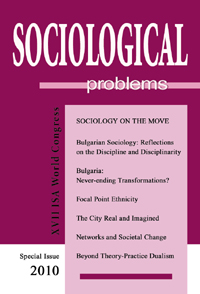Waves of the Change and Change of the Waves (Analysis of the Shortening of the Kondratiev Waves by Moving Sub-Periods)
Waves of the Change and Change of the Waves (Analysis of the Shortening of the Kondratiev Waves by Moving Sub-Periods)
Author(s): Kaloyan Haralampiev, Georgi NaidenovSubject(s): Social Sciences
Published by: Институт по философия и социология при БАН
Summary/Abstract: One of the most important problems of Kondratiev waves is the problem about their period. An interesting and original conception about the shortening of the Kondratiev waves is suggested by Professor Vladimir Pantin. According to him, one cycle of the international market’s evolution includes two Kondratiev waves. The considerably shorter period of the decreasing parts of the waves in the end of XX century is the reason for the shortening of the Kondratiev waves. If we need to reveal Kondratiev waves, whose period is 45–60 years, then the time series with raw data have to be at least one and half time longer, i.e. not less than 90 years. If, however, the time series with raw data is longer than 90 years, we could adapt and use one statistical technique known as moving averages. This algorithm gives us an opportunity to examine cyclic recurrences for time sub-periods which slowly move forward in time. Until now we have used only data for Bulgaria and Russia in our research. There are nine indicators out of the ten, previously analyzed by us, which allow us to use moving sub-periods because the time series are long enough (longer than 90 years). The results for Bulgaria are contradictory – only for one of out of the three indicators we have found that Kondratiev waves undoubtedly shorten their period. In the same time the results for Russia speak for themselves – for all analyzed indicators Kondratiev waves shorten by consecutive transformations over time from classical Kondratiev waves to non-classical ones and then to Menshikov waves. The Menshikov waves (in upper part of time period) as a period as well as time of manifestation correspond to the time and the period of the fourth cycle of the world conjuncture according to Pantin’s conception.
Journal: Социологически проблеми
- Issue Year: 42/2010
- Issue No: Spec. 2
- Page Range: 242-267
- Page Count: 26
- Language: English
- Content File-PDF

